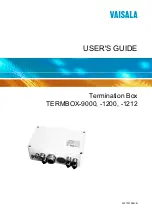
Configuration Guide
406
Configuring DHCP
DHCP
1
DHCP
1.1 Overview
DHCP (Dynamic Host Configuration Protocol) is widely used in local area networks (LANs)
to dynamically assign IP addresses and other network configuration parameters to network
devices, which enhances the utilization of IP address.
1.2 Supported Features
The supported DHCP features of the switch include DHCP Relay and DHCP Client.
DHCP Client
A Layer 3 interface can be configured as a DHCP client. After configured, the Layer 3
interface can dynamically obtain IP address and other parameters from a DHCP server,
which eases the network configuration and management. As the following figure shows,
the switch acts as a DHCP client and dynamically obtain IP address from the DHCP server.
Figure 1-1
Application Scenario of DHCP Client
Switch
DHCP Client
DHCP Server
DHCP Relay
DHCP Relay is used to process and forward DHCP packets between different subnets or
VLANs.
Since the client requests a dynamic IP address via broadcast, the basic network model
of DHCP requires that the client and the server should be on the same LAN (on the same
subnet and VLAN). Therefore, each LAN should be equipped with a DHCP server, thus
increasing the costs of network construction.
DHCP Relay solves this problem. The DHCP Relay device acts as a relay agent and
forwards DHCP packets between DHCP clients and DHCP servers on different LANs, so
that DHCP clients on different LANs can share one DHCP server.
















































